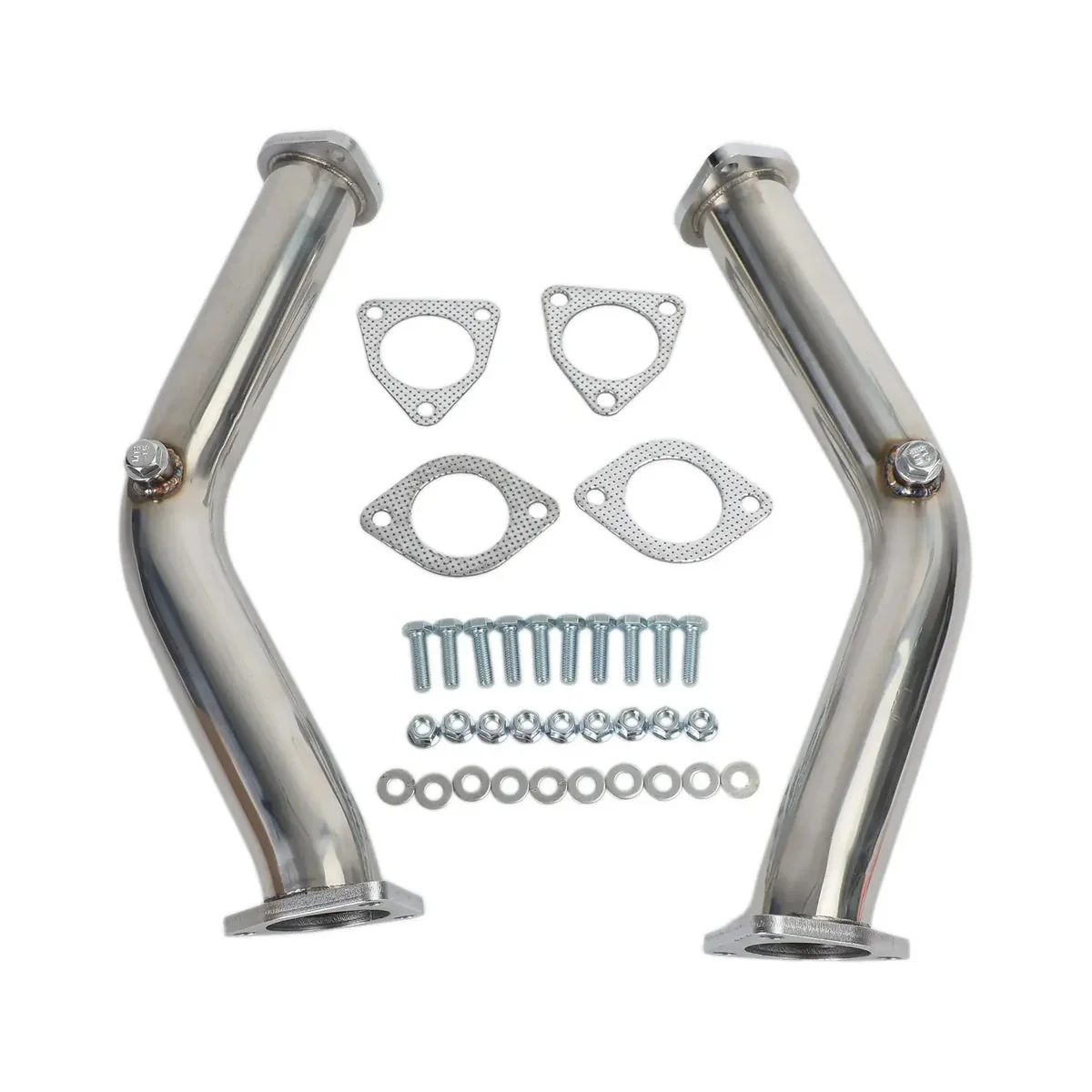Whether you own a Nissan G35 or you are simply considering boosting its performance, you must have heard the term G35 test pipes. What are they though and why are they installed by car lovers? In layman’s terms, your car factory catalytic converters are substituted with test pipes. This enables flow of exhaust gases to occur more freely, which can increase the power and sound of the engine. Today in the article, we are going to deconstruct everything there is about the G35 test pipes; what are they and what are they used for? So, you are either a first-time car modder or an aggressive gearhead, and you want to learn the basics? Check out this simple guide!
How Do Test Pipes Improve Performance?
The biggest benefit of installing test pipes on a G35 is improved exhaust flow. When exhaust gases move quickly and smoothly out of the engine, it creates less backpressure. This helps the engine “breathe” better, allowing more air and fuel to enter during each combustion cycle.
Here’s how test pipes boost performance:
- More horsepower and torque: Free-flowing exhaust reduces engine strain and increases power.
- Faster throttle response: The engine reacts more quickly when you press the gas pedal.
- Louder, sportier sound: Without catalytic converters, the exhaust becomes deeper and more aggressive.
While the performance gains may vary depending on other modifications (like cold air intakes or cat-back exhaust systems), most G35 owners report noticeable improvements in both power and sound.
Pros and Cons of Using G35 Test Pipes
Installation of test pipes is one of the decisions that can be used. Before making a decision, one should be familiar with their pros and cons.
Pros:
- Greater horsepower and torque
- Increased engine breathing and efficiency
- Sound of fierce exhausts
- Less expensive compared to full operation exhaust systems
- Simple to fit (bolt-on type)
Cons:
- May cause the check engine light (CEL)
- Not legal in some states for driving because of emissions regulations
- Alcohol radiations – More car fumes (no catalytic converter to purify gases)
- The potential of drones in the car or loudness
Most people buying catalytic converters will add O2 sensor spacers or an ECU tune to avoid the possibility of the check engine light coming on after the change.
Resonated vs. Non-Resonated Test Pipes
G35 test pipes come in two main types: resonated and non-resonated. Both serve the same function but affect sound differently.
- Resonated Test Pipes: These have a small resonator inside that helps reduce noise and drone. They are great for people who want performance but don’t want their car to be too loud.
- Non-Resonated Test Pipes: These are straight pipes with no sound control. Utility Pipe Supply They provide the loudest exhaust tone, often with a deep growl, but they can be too noisy for daily driving.
If you’re concerned about noise or comfort, resonated pipes are the better choice. If you want the full race-car sound, go with non-resonated.
Are G35 Test Pipes Legal?
The question is really significant. Repairing or replacing catalytic converters without permission is illegal in most areas of the United States and elsewhere since this practice causes more air pollution. The test pipes are normally intended to be used off-road or on track only.
In case you live in an area where inspection is mandatory every year, testing through the use of test pipes can cause your car to fail during inspection. Before installing test pipes, always pay attention to local laws. In certain areas, you will obtain an emissions-exempt tag in case your vehicle is also only used in racing or off-road events.
Tips for Installing G35 Test Pipes
If you’re ready to install test pipes on your G35, here are a few helpful tips:
- Lift the car safely: You’ll need to access the undercarriage. Use jack stands or a lift.
- Use anti-seize on bolts: This prevents rust and makes future removal easier.
- Check for exhaust leaks: Make sure all joints and flanges are tight.
- Install O2 sensor spacers: These can help avoid the check engine light.
- Consider professional tuning: To maximize performance and reduce CEL risk, get a custom ECU tune.
Installation usually takes 1–2 hours with basic tools and some mechanical knowledge.
FAQ’s
Q1: Will installing test pipes damage my engine?
No, test pipes do not damage the engine. In fact, they help reduce strain by improving airflow. Just ensure proper installation.
Q2: Do test pipes increase fuel consumption?
Fuel consumption may remain the same or slightly improve if the engine breathes better. Aggressive driving, however, will use more fuel.
Q3: Will my car be too loud with test pipes?
It depends. Non-resonated test pipes are very loud. Resonated ones offer a balance between performance and sound.
Q4: Can I remove test pipes later and reinstall the catalytic converters?
Yes. Most test pipes use a bolt-on design, so you can easily switch back if needed.
Conclusion
G35 test pipes happen to be among the most common performance improvements to make to increase sound, performance and engine response. With fitted free-flowing pipes instead of the restrictive stock catalytic converters, you will have improved horsepower, feel of the throttle and the thrill of that exhaust note. But be sure to know the legal and emissions-related build-ups where you are to locate. In case you are willing to advance your Infiniti G35 to the next level, test pipes are a wise and inexpensive place to start. Simply opt the correct style, install the same and drive well.

















